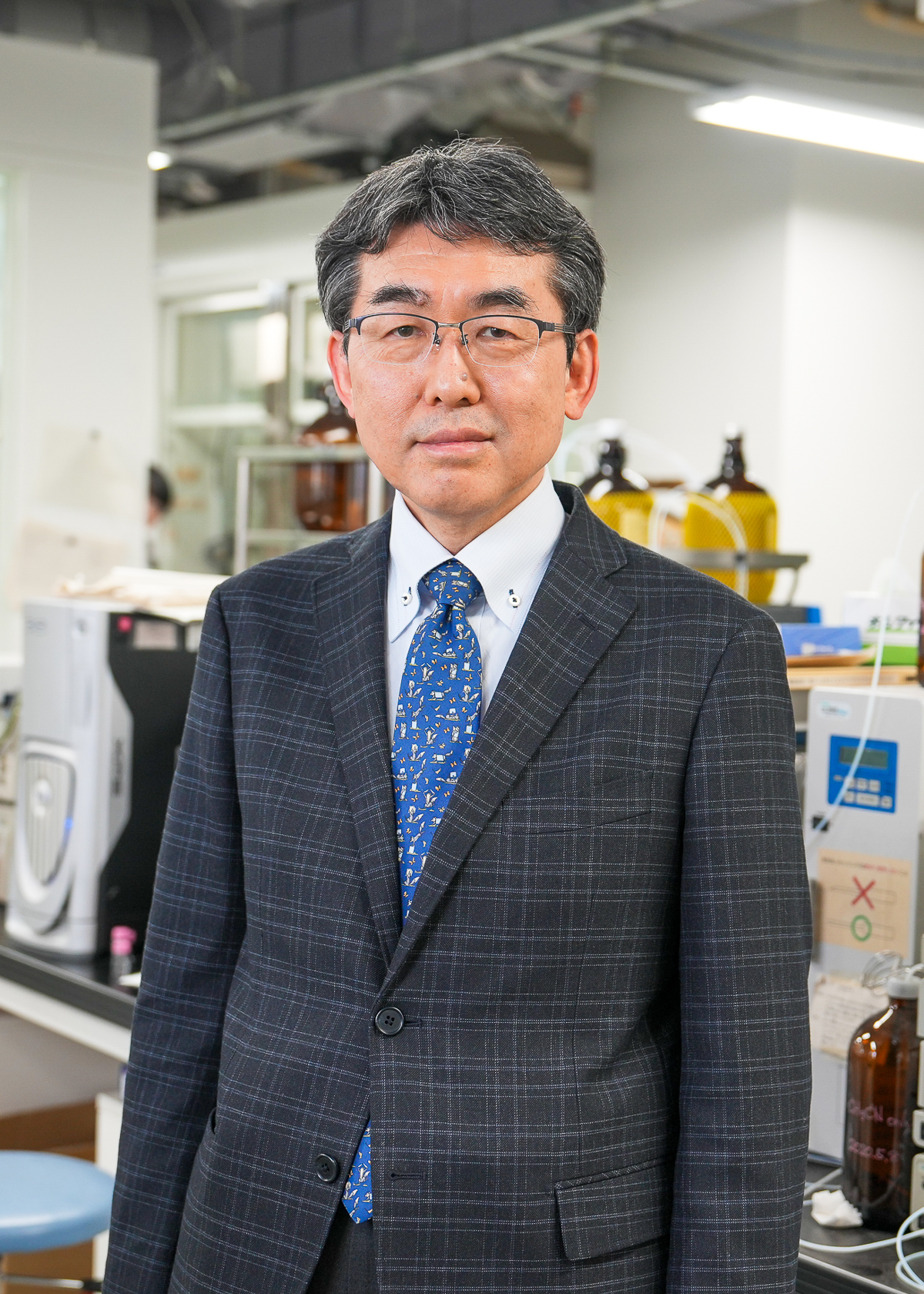PI Takeshi Ohkuma Specially Appointed Professor
PI message
“Synthetic Organic Chemistry” is a “science for producing of evidence”. The researchers are able to develop novel reactions and to synthesize their own organic compounds. This means that researchers (experiment conductors) can leave their marks as the scientific great achievements based on their inventive ideas and challenges. I clearly remember the excitement and elation when unexpected excellent reactions were found out by myself. I hope that you will also join as the researchers of “Synthetic Organic Chemistry”.
Research
“Synthetic Organic Chemistry” is the research field for developing the reaction that can synthesize wide varieties of organic compounds whichever we want. Especially, our target molecules are “medicinal compounds” and “organic functional materials”, which will make our life more wonderful! In our group, we try hard to establish a new methodology for synthesize those compounds effectively, cost efficiently and environmentally friendly. The key words of our research are “asymmetric synthesis”, “molecular catalyst”, “catalytic activity”, “stereoselectivity”, and “chemoselectivity”. “Asymmetric synthesis” is the synthetic method to generate chiral organic compounds from achiral or racemic substrate, selectively. It is well known that several organic molecules have their “mirror image partners”, and those relationships are called as “enantiomer”. Please visit the home page of our laboratory (https://orgsynth.eng.hokudai.ac.jp) for detail.
Member
-
Takeshi OhkumaSpecially Appointed ProfessorResearch FieldSynthetic Organic Chemistry, Organometallic Chemistry, Asymmetric Synthesis, Molecular Catalysis
-
Noriyoshi AraiAssociate Professor
-
Taiga YurinoAssistant ProfessorResearch FieldSynthetic Organic Chemistry, Catalytic synthesis of isonitriles, Asymmetric cyanation, User-friendly allylic substitution, Organometallic chemistry
Main Research Achievements
- T. Yurino, S. Saito, M. Ichihashi, T. Ohkuma, J. Org. Chem. Published on line (2022).
DOI: 10.1021/acs.joc.1c02768 - T. Yurino, Y. Tange, R. Tani, T. Ohkuma, Org. Chem. Front. 7, 1308–1313 (2020).
DOI: 10.1039/d0qo00336k - T. Yurino, R. Tani, T. Ohkuma, ACS Catal. 9, 4434–4440 (2019).
DOI: 10.1021/acscatal.9b00858 - N. Arai, T. Ohkuma, Org. Lett. 21, 1506–1510 (2019).
DOI: 10.1021/acs.orglett.9b00303 - N. Arai, T. Namba, K. Kawaguchi, Y. Matsumoto, T. Ohkuma, Angew. Chem. Int. Ed. 57, 1386–1389 (2018).
DOI: 10.1002/anie.291711363 - N. Arai, H. Satoh, R. Komatsu, T. Ohkuma, Chem. Eur. J. 23, 8806–8809 (2017).
- N. Arai, K. Sato, K. Azuma, and T. Ohkuma, Angew. Chem. Int. Ed. 52, 7500–7504 (2013).
DOI: 10.1002/anie.201303423 - K. Matsumura, N. Arai, K. Hori, T. Saito, N. Sayo, and T. Ohkuma, J. Am. Chem. Soc. 133, 10696–10699 (2011).
DOI: 10.1021/ja202296w - N. Kurono, N. Nii, Y. Sakaguchi, M. Uemura, and T. Ohkuma, Angew. Chem. Int. Ed. 50, 5541–5544 (2011).
DOI: 10.1002/anie.201100939 - N. Kurono, K. Arai, M. Uemura, and T. Ohkuma, Angew. Chem. Int. Ed. 47, 6643–6646 (2008).
DOI: 10.1002/anie.200801501
Contact
ohkuma(at)eng.hokudai.ac.jp


